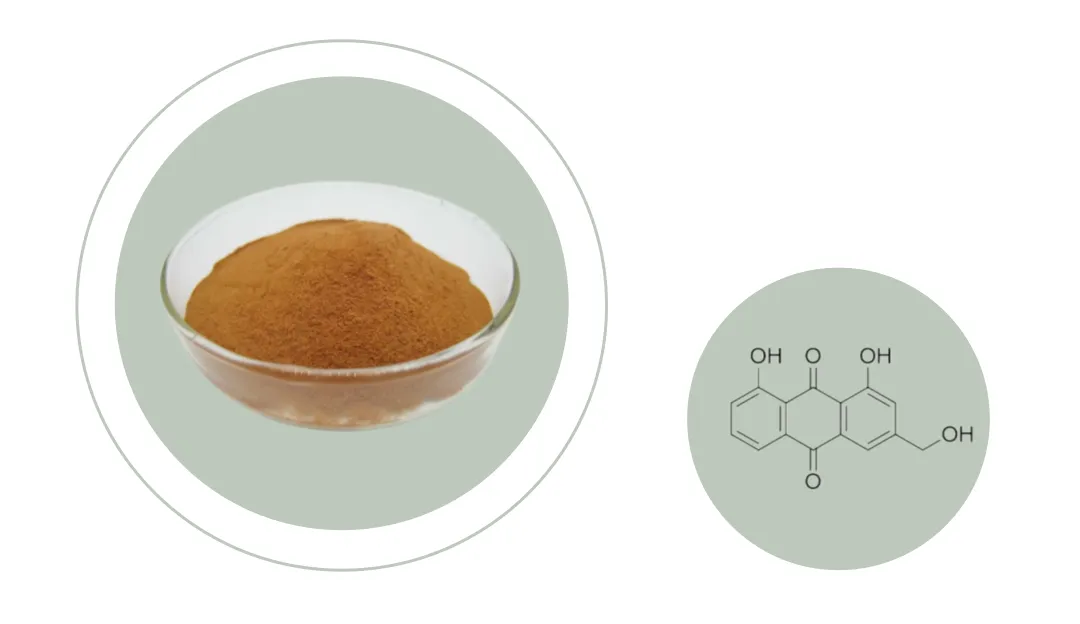The Remarkable Transformation of Aloe Emodin: From Botanical Source to Medicinal Powerhouse
Tag:Industry News

Aloe emodin (CAS: 481-72-1), an anthraquinone compound, is a naturally occurring secondary metabolite with significant pharmaceutical potential. Characterized by its bright orange needle-like crystals or pale yellowish-brown crystalline powder, aloe emodin possesses the molecular formula C15H10O5 and a molecular weight of 270.2369 Da. Its physicochemical properties include a melting point range of 223–244°C. Understanding the extraction, purification, and applications of this compound is crucial for its utilization in therapeutic contexts.

Botanical Sources of Aloe Emodin
Aloe emodin is found in various plant families, with primary sources including:
Polygonaceae:
Species within the Rheum genus, such as Rheum palmatum, Rheum tanguticum, and Rheum officinale, are notable sources, particularly their dried roots and rhizomes.

Liliaceae:
Species of Aloe, including Aloe barbadensis (Aloe vera) and Aloe vera var. chinensis, contain measurable amounts of aloe emodin.

Other Sources:
Additional sources include Rumex patientia (rhizomes), Rumex dentatus (leaves), Cassia obtusifolia (roots), Cassia tora (seeds), and Senna occidentalis (seeds).

Extraction and Purification:
The process of obtaining high-purity aloe emodin involves a systematic approach:
1. Raw Material Selection:
High-quality plant extracts rich in aloe emodin are essential.
2. Extraction and Initial Precipitation:
Controlled hydrolysis and oxidation techniques are employed to convert precursor compounds into aloe emodin.
This step yields a crude aloe emodin product.
3. Purification:
Dissolution and extraction methods are used to remove impurities and increase the concentration of aloe emodin.
Rigorous purification ensures compliance with established purity standards, resulting in a high-quality product.
Pharmaceutical Applications:

Aloe emodin plays a critical role as an intermediate in the synthesis of Diacerein (CAS: 13739-02-1), a pharmaceutical agent used in the treatment of osteoarthritis. Key mechanisms of action include:
Chondrogenesis:
Stimulation of chondrocyte proliferation and differentiation, facilitating cartilage repair and regeneration.
Analgesic and Anti-inflammatory Properties:
Inhibition of inflammatory mediator production and release, alleviating pain and inflammation associated with osteoarthritis.
Disease Modification:
Potential to slow the progression of osteoarthritis, protecting joint function and enhancing patient quality of life.
Commercial Information:
For inquiries regarding the purchase of aloe emodin products, please direct your communication to: Sales@dachenpharm.com. We offer tailored consultations and customized solutions based on specific applications. We also welcome collaborations with distributors.

